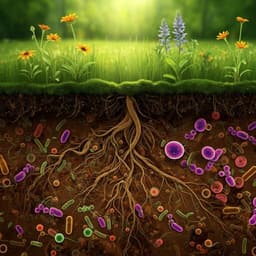
Environmental Studies and Forestry
Changes in biodiversity impact atmospheric chemistry and climate through plant volatiles and particles
A. Sanaei, H. Herrmann, et al.
In a groundbreaking study by Anvar Sanaei and colleagues, the relationship between biodiversity and plant emissions of biogenic volatile organic compounds (BVOCs) is explored. The findings reveal intriguing dynamics in BVOC concentrations as biodiversity increases, and they highlight the complex interactions leading to variability in biogenic secondary organic aerosol (BSOA) formation. Dive into the research to uncover these vital connections.
~3 min • Beginner • English
Related Publications
Explore these studies to deepen your understanding of the subject.







